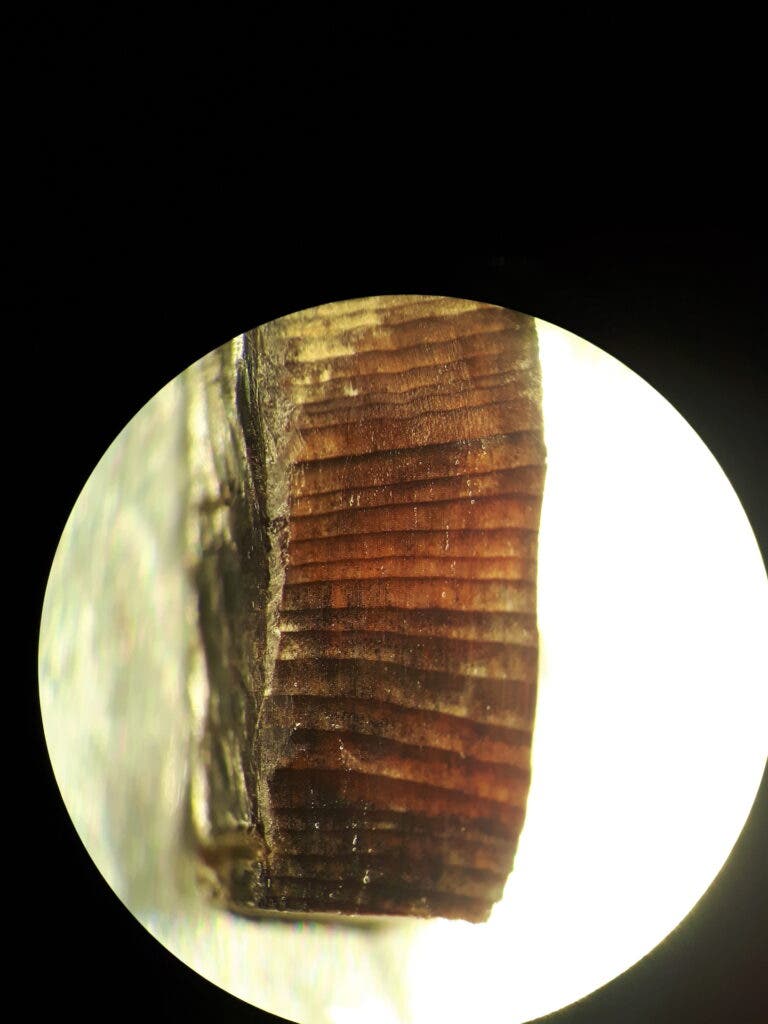Several wooden items discovered at an archaeological site in Newfoundland, Canada, paint an exciting picture: Vikings were on these shores in AD 1021, one thousand years ago. This would be the earliest known human crossing of the Atlantic in history, preceding Columbus’ discovery of the Americas by over 450 years.

It isn’t exactly news that the Vikings reached the Americas before European explorers officially ‘discovered’ it. To the best of our knowledge, these Scandinavian explorers settled at a site known as L’Anse aux Meadows in what is today the Newfoundland peninsula. We know this was happening as early as the first millennium BC, but we didn’t have a precise date as to when.
New research, however, comes to give us a reliable estimation of when the first Europeans reached and settled these shores.
One man’s trash…
“The artefacts are not ‘display pieces’ or ‘works of art’ in any sense. They are actually just off-cuts of wood. Pieces of wood that were discarded by the Vikings,” explained Prof. Dr. Michael Dee, Associate Professor of Isotope Chronology at the University of Groningen and corresponding author of the paper, for ZME Science in an email. “The wood ended up in a nearby bog and the conditions in that bog were very good for the preservation of organic material. That is how they have survived until today.”
These pieces of wood were identified as having belonged to Vikings based on their location within the settlement, and by evidence on their surface of being processed using metal tools. Indigenous people living in America at the time did not have knowledge of metalwork, making this a very reliable indication of the artifacts’ origins.
The authors analyzed these pieces of wood found at the L’Anse aux Meadows site using carbon-dating (or ‘radiocarbon dating’) techniques. While this type of analysis cannot reveal when the timber was processed, it can tell us when the original trees were first cut down. While organisms such as plants live, they take in carbon from their environment. When they die or are cut down, this process stops. By analyzing the ratio of carbon isotopes in a sample of organic tissue, and then comparing it to a lot of historical references, researchers can estimate with pretty good accuracy when the processes stopped. More on carbon dating here.

What allowed the team to reach such an accurate result in the case of these pieces of wood were “sudden increases [in the production of the 14C isotope] caused by cosmic radiation events”. This increase has been documented occurring “synchronously in dendrochronological records all around the world”, and is thus a very well-established and reliable event by which to date the pieces of wood. The particular marker they used here was a shift in the ratio of atmospheric carbon isotopes caused by a cosmic-ray event in AD 993.
I asked Dr. Dee what the most exciting moment of performing this research was for him, and he told me:
Well it was pretty amazing to measure the isotope concentrations of lots and lots of tree-rings from, ultimately, three different pieces of wood from three different trees to discover they were all cut down in exactly the same year — and that year was exactly one millennium ago!
According to the team, these results place the year AD 1021 as the new timeline for when Europe and the Americas first came into contact.
“We provide the earliest date for Europeans in the Americas. Indeed it is the only date for Europeans in the Americas before the arrival of Columbus — some 471 years later. This date also represents the first time in all of human history that the Atlantic Ocean was crossed — and humanity had travelled all the way around the globe. We think this in itself has particular significance.”
Beyond the value of these findings for historians, the paper also showcases how cosmic-ray events, despite being something completely removed from archaeology or the goings-on on planet Earth, can be used as reference points to date historical events.
The paper “Evidence for European presence in the Americas in AD 1021” has been published in the journal Nature.









